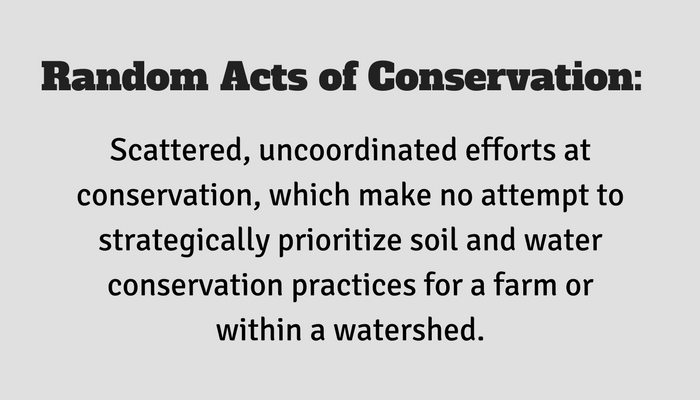April 17, 2018

Farmers will continue to fall short of achieving water quality targets unless we, as conservationists, get serious about precision conservation. We simply cannot expect random acts of conservation to carry the day.

As an example, scientists have long recognized that not every square foot of buffer is created equal; that buffers do not provide the same level of protection from sediment delivery to streams and rivers. Not surprisingly, overland flow may never go through the buffer, rending that area of the buffer useless for filtering sediment.
As recently as 2015, the USDA National Agroforestry Center in Lincoln, NE demonstrated that if vegetative buffers are strategically placed, the same reduction in sediment delivery could be achieved with 1/3 the area in buffers. Now, that is Precision Conservation; or what I call, more bang for the buck.
Recently, Agren® developed the first-to-market commercial software to evaluate the effectiveness of variable width buffers at the field level. This tool shows the landowner how redistributing the buffer’s vegetation can maximize environmental benefits or minimize land out of production, all while achieving the same environmental benefits as a fixed width buffer. This practical technology is already approved for use in Minnesota. Farmers can get an individualized plan that reduces the acres seeded down but achieves the same reduction levels in sediment delivery.
Agren’s buffer tool technology is the tip of the iceberg. Working with USDA’s Agricultural Research Service, Agren developed the capability to model the amount of sediment delivered to any specific location in a field. This technology, which uses USDA’s RUSLE2, is able to strategically place variable width buffers and other conservation practices (both structural practices and management) to achieve the biggest bang for the buck. Rather than seeding down a fixed-width buffer, for example, a farmer may want to enhance environmental performance with a water and sediment control basin (WSCB).
I admit, the thought of Precision Conservation can feel unattainable. Rather than dwelling on what we can’t change, we need to act upon what we can change. We can start by transferring the wealth of scientific research from USDA scientists over the decades. Agren has started this effort to commercialize some of this amazing USDA technology.
In my next blog post, I will unveil Agren’s next generation of software that makes Precision Conservation a reality. This platform will change how soil conservation practices are targeted and applied, ending the excuse for random acts of conservation. I look forward to hearing your comments. It should be a lively discussion.
About the Author(s)
You May Also Like






